|
|

11-26-2012, 12:34 PM
|
 |
Moderator
|
|
Join Date: Dec 2010
Location: Pacific Northwet
Posts: 8,030
Thanks: 33
Thanked 87 Times in 36 Posts
|
|
Thanks for taking action on NLY, hopefully your Midas Touch will drive it down and I can grab another 100. 
|

11-26-2012, 01:16 PM
|
 |
Administrator
|
|
Join Date: Jul 2004
Location: Wilton, CA.
Posts: 12,906
Thanks: 5,593
Thanked 1,598 Times in 717 Posts
|
|

Quote:
Originally Posted by GregWeld

I put some cash to work first thing this morning in Annaly (NLY) and Con Ed (ED)... just nibbling and adding to my holdings. Both of these have been stepping down for awhile now - and as they do - the dividend PERCENTAGE rises. I practice what I preach and I scale in and or scale out. As an example -- I held 7,000 shares of ED -- This morning I bought 1,000 more. At 4+ percent return -- it's a decent hold and I think it's been selling off due to the big storm and the expected costs. I view this as a temporary issue. Not that this is a stock that moves all that much to begin with (which is why I own it in the first place!).
I added 10,000 shares of Annaly.... at these prices -- it counteracts the lower dividend % of shares like ED. I would repeat - this is not a stock that should be bought and forgot. It's a pure dividend play and as such - is much more volatile. These kinds of shares are where I park cash.
|
what are guys like you going to do if the dividends tax goes from 15% to 39.6%? I believe that's where it's set to go Jan 1 if Congress doesn't change anything.

|

11-26-2012, 06:41 PM
|
 |
Senior Member
|
|
Join Date: Jul 2006
Location: San Francisco
Posts: 505
Thanks: 0
Thanked 0 Times in 0 Posts
|
|

As a coincidence to what Jody posted, here's a piece from Buffett published in the Times today regarding investment behavior under changing tax rates:
http://www.nytimes.com/2012/11/26/op....html?hp&_r=1&
Quote:
SUPPOSE that an investor you admire and trust comes to you with an investment idea. “This is a good one,” he says enthusiastically. “I’m in it, and I think you should be, too.”
Would your reply possibly be this? “Well, it all depends on what my tax rate will be on the gain you’re saying we’re going to make. If the taxes are too high, I would rather leave the money in my savings account, earning a quarter of 1 percent.” Only in Grover Norquist’s imagination does such a response exist.
Between 1951 and 1954, when the capital gains rate was 25 percent and marginal rates on dividends reached 91 percent in extreme cases, I sold securities and did pretty well. In the years from 1956 to 1969, the top marginal rate fell modestly, but was still a lofty 70 percent — and the tax rate on capital gains inched up to 27.5 percent. I was managing funds for investors then. Never did anyone mention taxes as a reason to forgo an investment opportunity that I offered.
Under those burdensome rates, moreover, both employment and the gross domestic product (a measure of the nation’s economic output) increased at a rapid clip. The middle class and the rich alike gained ground.
So let’s forget about the rich and ultrarich going on strike and stuffing their ample funds under their mattresses if — gasp — capital gains rates and ordinary income rates are increased. The ultrarich, including me, will forever pursue investment opportunities.
And, wow, do we have plenty to invest. The Forbes 400, the wealthiest individuals in America, hit a new group record for wealth this year: $1.7 trillion. That’s more than five times the $300 billion total in 1992. In recent years, my gang has been leaving the middle class in the dust.
A huge tail wind from tax cuts has pushed us along. In 1992, the tax paid by the 400 highest incomes in the United States (a different universe from the Forbes list) averaged 26.4 percent of adjusted gross income. In 2009, the most recent year reported, the rate was 19.9 percent. It’s nice to have friends in high places.
The group’s average income in 2009 was $202 million — which works out to a “wage” of $97,000 per hour, based on a 40-hour workweek. (I’m assuming they’re paid during lunch hours.) Yet more than a quarter of these ultrawealthy paid less than 15 percent of their take in combined federal income and payroll taxes. Half of this crew paid less than 20 percent. And — brace yourself — a few actually paid nothing.
This outrage points to the necessity for more than a simple revision in upper-end tax rates, though that’s the place to start. I support President Obama’s proposal to eliminate the Bush tax cuts for high-income taxpayers. However, I prefer a cutoff point somewhat above $250,000 — maybe $500,000 or so.
Additionally, we need Congress, right now, to enact a minimum tax on high incomes. I would suggest 30 percent of taxable income between $1 million and $10 million, and 35 percent on amounts above that. A plain and simple rule like that will block the efforts of lobbyists, lawyers and contribution-hungry legislators to keep the ultrarich paying rates well below those incurred by people with income just a tiny fraction of ours. Only a minimum tax on very high incomes will prevent the stated tax rate from being eviscerated by these warriors for the wealthy.
Above all, we should not postpone these changes in the name of “reforming” the tax code. True, changes are badly needed. We need to get rid of arrangements like “carried interest” that enable income from labor to be magically converted into capital gains. And it’s sickening that a Cayman Islands mail drop can be central to tax maneuvering by wealthy individuals and corporations.
But the reform of such complexities should not promote delay in our correcting simple and expensive inequities. We can’t let those who want to protect the privileged get away with insisting that we do nothing until we can do everything.
Our government’s goal should be to bring in revenues of 18.5 percent of G.D.P. and spend about 21 percent of G.D.P. — levels that have been attained over extended periods in the past and can clearly be reached again. As the math makes clear, this won’t stem our budget deficits; in fact, it will continue them. But assuming even conservative projections about inflation and economic growth, this ratio of revenue to spending will keep America’s debt stable in relation to the country’s economic output.
In the last fiscal year, we were far away from this fiscal balance — bringing in 15.5 percent of G.D.P. in revenue and spending 22.4 percent. Correcting our course will require major concessions by both Republicans and Democrats.
All of America is waiting for Congress to offer a realistic and concrete plan for getting back to this fiscally sound path. Nothing less is acceptable.
In the meantime, maybe you’ll run into someone with a terrific investment idea, who won’t go forward with it because of the tax he would owe when it succeeds. Send him my way. Let me unburden him.
Warren E. Buffett is the chairman and chief executive of Berkshire Hathaway.
|

|

11-27-2012, 12:16 AM
|
 |
Lateral-g Supporting Member
|
|
Join Date: Jul 2005
Location: Scottsdale, AriDzona
Posts: 20,741
Thanks: 504
Thanked 1,079 Times in 387 Posts
|
|

In response to Jody.... or anyone asking really....
Personally my goal has always only been one thing. To make as much money for myself as humanly possible. The tax bill is just what it is, a function of making a bunch of money.
When I was a V.P. and partner in a multimillion dollar importing company in New York City.... I paid 50% federal income tax - New York City income tax - New York State income tax - and sales taxes on top of that.... I never once thought -- OH! I shouldn't make any more money because I might have to pay taxes on it. Never.
I figure if I earn a dollar - and I owe the gov .40 of it - I still keep .60
What I do think about is.... I won't do anything right this instant that might have me making the wrong moves. In other words... I passed on an apartment building (1 mill minimum investment) because that type of investment is illiquid... and the new taxes might possible affect the returns on that kind of investment - therefore affecting the value of that investment going forward. This is called "uncertainty" and uncertainty is what NOBODY wants because it causes paralysis in the markets. Just as I'm sure it did for that particular investment. Once you know what the situation is going forward - then everyone makes their adjustments and moves forward.

|

11-30-2012, 02:40 PM
|
 |
Lateral-g Supporting Member
|
|
Join Date: Jul 2005
Location: Scottsdale, AriDzona
Posts: 20,741
Thanks: 504
Thanked 1,079 Times in 387 Posts
|
|

COLUMN-Four reasons dividends won't fall off 'fiscal cliff'
11:58 AM ET, 11/30/2012 - Reuters
By John Wasik
CHICAGO, Nov 30 (Reuters) - With a tax increase on dividends and capital gains looming, high-dividend paying stocks may hold up well - even if investment income rates climb on Jan. 1.
Unless Congress acts by the end of the year, taxes on dividends will automatically rise from the current 15 percent to as high as 39.6 percent. While that sounds like a draconian increase, it should not discourage investors from owning high-dividend paying stocks nor should it trigger a lasting market decline.
You can blame inertia, but individual investors are likely to stick with their dividend stocks anyway. And those who do may even be rewarded for the fear factor of higher rates. Companies like Wal-Mart have moved up dividend payments to December. Others like Costco, Wynn Resorts and Tyson Foods are declaring special dividends, some of them quite substantial.
If history provides any clue, the market should get over its anxiety quickly and move on. According to a study by Ned Davis Research, dividend stocks performed well during past periods of higher dividend taxes. The firm studied years when rates ranged from 28 percent (1988-1990) to 70 percent (1972-1978).
In every period studied, except for 1987, high-dividend stocks outperformed non-dividend payers. The margin of outperformance was as high as nearly 15 percentage points.
What's the connection between tax rates and dividend-paying stock returns? According to Milller/Howard Investments in a recent report: "There is no correlation between lower dividend taxes and the performance of dividend-paying stocks."
There are some fundamental financial and psychological reasons why dividend payments and tax rates are unlinked. Here are the four most compelling ones:
1. Investors still know how to play the ongoing contest between bonds, insured vehicles and dividend-paying stocks. Savvy investors buy on the spread, or the difference between asset classes. Right now, that gap is big.
The national average rate on a one-year certificate of deposit, according to Bankrate.com, is a miserable 0.29 percent, although you can find a CD yielding 1 percent if you shop around.
You can get a 2 percent yield on the Vanguard Dividend Appreciation ETF right now. The exchange-traded fund holds a basket of stocks that consistently boost their dividends. This spread is unlikely to narrow soon since the Federal Reserve has said it will leave interest rates close to zero into 2014 if the economy continues to be sluggish.
I know I'm comparing apples and oranges - an insured investment with stocks - but long-term, total-return investors are willing to take on the extra risk.
2. The best dividend-paying stocks combine income with potential growth in the payout over time. Conventional bonds and insured deposits pay a fixed rate until maturity. While there may be some compounding, your income stream won't change during the time you hold your bond to maturity.
Dividend payers can increase their payouts every quarter - and many have done so consistently over time. Energy company Chevron, for example, has been paying dividends since 1912; Colgate-Palmolive since 1895, and Stanley Black & Decker since 1877, according to Investorplace.com's list of "dependable dividends."
Investors will continue to embrace consistency paired with dividend growth even if tax rates climb.
3. Dividends still provide a modest cushion in calamity. While dividend-payers still are subject to stock market risk, they are much better to own in a pinch in a low-yield, slow-growth environment.
If you examine the most elite companies that have raised dividends for at least 20 years - the S&P High Yield Dividend Aristocrats - those companies have outpaced the broad S&P 500 index over the past one, three and five years through 2011.
Even when you include the disastrous results from 2008, the Aristocrats turned in a 1.53 percent return for the half decade versus a negative 0.25 percent for the stocks of the S&P 500. Keep in mind that one-third of total stock returns have come from dividends since 1926, so in the absence of appreciation, dividends provide some insulation in bear markets
4. Total return still matters. Yield isn't the only reason dividend payers will prevail in the event of a tax increase. Companies also offer the potential for capital appreciation in growing economies.
The most consistent payouts come from sectors of the economy that straddle defensive and growth categories. Utilities, for example, many of which have been around for a century, have traditionally paid out large portions of their cash to shareholders. Combined with an increasing demand for electricity and energy, they've done well in recent years.
The Utilities Select Sector SPDR, for example, has returned nearly 14 percent over three years through Oct. 30, with a recent yield of about 4 percent.
The Vanguard Consumer Staples ETF, which tracks an index that holds "consumer defensive" companies like Altria and Coca-Cola, is up nearly 15 percent with a 2 percent yield.
The market will get nervier the closer Congress gets to the end of the year - dividend payers will likely provide the modest bulwark they always have for buy-and-hold investors. There are no guarantees, but the lion's share of dividends won't suddenly disappear just because tax rates change.

|

12-01-2012, 12:29 AM
|
 |
Senior Member
|
|
Join Date: Dec 2006
Posts: 8,692
Thanks: 87
Thanked 214 Times in 120 Posts
|
|

Let's talk some small potatoes real estate.
We closed on this property about 3 weeks ago and the tenant moved in today. It's located in South Las Vegas in a good neighborhood. I got lucky and found a retired school supertindent from Phoenix with no pets. He races go karts on the road course.
Purchase Price: $109,500
Down Payment: $21,900
Loan Amount: $87,600 (3.75% Fixed/30 Years)
Closing Costs:$6,400
Fix Up: $8,000
-3,285 Commission
Initial Investment: $33,015
Rent: $1075 Per Month (Under value due to quality tenant)
Mortgage Payment (PITI) $547
Gross Monthly Cash Flow: $528
First 5 Year ROI
Gross Cash Flow: $31,680
Principal Reduction:$8,640
Appeciation (3% Yearly): $16,425
Cash Flow Invested 1% Money Market: $3,168
Realized Gross Gain: $59,913
15 Year ROI
Gross Cash Flow: $95,040
Principal Reduction: $31,320
Appreciation (3% Yearly): $49,275
Cash Flow Invested in 1% Money Market: $9,504
Realized Gross Gain: $185,139
I realize these are gross numbers and don't include repair, vacancy, or taxes. They are attractive numbers regardless.
My plan is to have this property paid in full between my 52nd-55th birthday cash flowing $1000-$1300 a month with a value of approximately $160,000. IF, I don't decide it's time to 1031 the money to a different market due to market forces or relocation.
The property turned out really sharp and way beyond average for our rental market. That required a larger initial investment but I feel it will cost me less vacany and less fix up over the years. I know that the best properties attract the best tenants. I also realize that the rental market will take a turn for the worse in the foreseable future. I want the cream of the crop.
Ironically, after I closed the deal with the tenant today, my 2nd property recieved short sale approval this morning. We plan to close by the end of the year. 





__________________
Todd
|

12-01-2012, 02:37 AM
|
 |
Moderator
|
|
Join Date: Sep 2005
Location: NorCal
Posts: 9,180
Thanks: 58
Thanked 158 Times in 104 Posts
|
|
Nice work for small potatoes. 
No before and after? What did you do for the $8k rehab?
__________________
2004 NASA AIX Mustang LS2 #14
1964 Lincoln Continental
2014 4 tap Keezer
|

12-01-2012, 03:09 AM
|
 |
Senior Member
|
|
Join Date: Dec 2009
Location: socal
Posts: 962
Thanks: 0
Thanked 28 Times in 17 Posts
|
|
X2 on the small potatoes. A few more of those will make for a good 55th bday.
Todd
How is the market on trustee sales in Vegas? Is there any wiggle room there or is every one doing it?
|

12-01-2012, 10:16 AM
|
|
Lateral-g Supporting Member
|
|
Join Date: Nov 2008
Location: Dunwoody, GA
Posts: 6,478
Thanks: 1,026
Thanked 714 Times in 555 Posts
|
|
And that's why I wouldn't mind getting into the rentals market at some point in my life. You're having someone else pay for your house. Good job, Todd. 
__________________
Trey
Current rides: 2000 BMW 540i/6 and 86 C10.
Former ride: 1979 Trans Am WS6: LT1/T56, Kore 3 C5/6 brakes, BMW 18in rims
|

12-01-2012, 10:23 AM
|
 |
Senior Member
|
|
Join Date: Dec 2006
Posts: 8,692
Thanks: 87
Thanked 214 Times in 120 Posts
|
|

Quote:
Originally Posted by Flash68

Nice work for small potatoes. 
No before and after? What did you do for the $8k rehab? |
Come to think of it, I accidentally erased the before photos. It was just all original 1998. It was a little tired.
Repairs:
Tiled the entire structure with 17" neutral tile/dark grout (Never mess with it again) $5,100
Painted the entire inside with a modern neutral washable $1000
Installed master shower enclosure to ward off water damage $187
Tore out tree that was compromising wall, fixed leak, and trimmed up landscaping $325
Replaced the kitchen appliances (Stove, Micro, Dishwasher)$1,200
Toilet Seats $30
Replaced some landscape lights $45
Painted exterior trim $300
Professional cleaning $200
I have around 15 hours in it myself.
Quote:
Originally Posted by frankv11

X2 on the small potatoes. A few more of those will make for a good 55th bday.
Todd
How is the market on trustee sales in Vegas? Is there any wiggle room there or is every one doing it?
|
The plan is 5 minimum within 3 years. Our notice of defaults have been picking up but our trustee sales are still week due to a dry spell, short sales, and loan mods. We have approx. 70,000 vacant properties in the valley and who knows how many are not makign their payments due to a senate bill that makes it difficult to foreclose. We are expecting another waive of bank foreclosures starting next spring as the banks are figuring things out and performing some judicial foreclosures. That will also pick up the short sale inventory as we have under 1,000 active short sales with 60% of our home owners in a negative equity position. Nevada is a non judicial state.
Guys are flipping properties for good profits as our inventory has been low for 6 months. Currently we have 4,700 active units in the ENTIRE valley and we are closing around 3,000 a month. Buyers are paying over market value in many cases due to the lack of quality inventory. This has led to an 18% price increase year to date. I really think the market has been undervalued due to the collapse of the market. Many feel we have a double dip coming and I can't disagree, I just don't think it will be substantial enough to not buy now at 3.75% interest. 
__________________
Todd
|
 Posting Rules
Posting Rules
|
You may not post new threads
You may not post replies
You may not post attachments
You may not edit your posts
HTML code is Off
|
|
|
All times are GMT -5. The time now is 07:28 PM.
|




